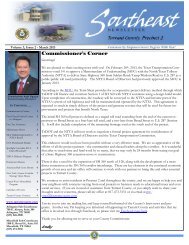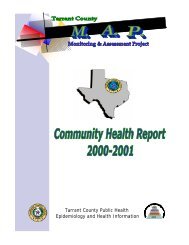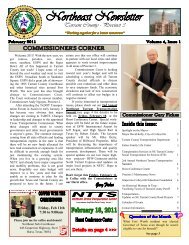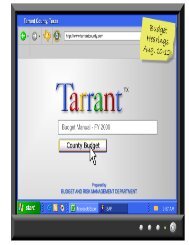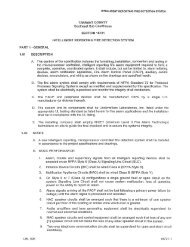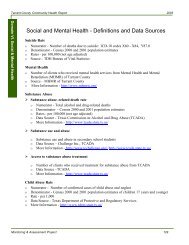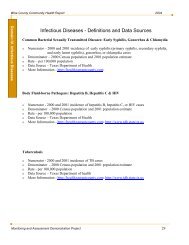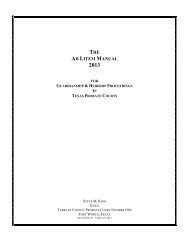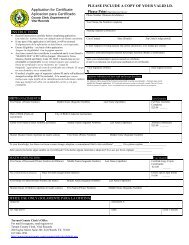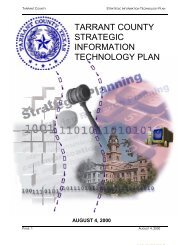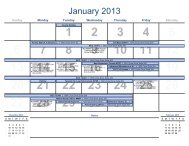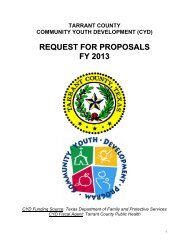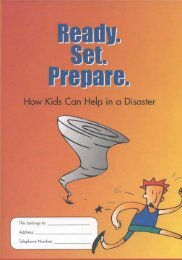MAPP Handbook - The National Association of County and City ...
MAPP Handbook - The National Association of County and City ...
MAPP Handbook - The National Association of County and City ...
Create successful ePaper yourself
Turn your PDF publications into a flip-book with our unique Google optimized e-Paper software.
TIP SHEET 7<br />
Conducting a Community Dialogue<br />
<strong>The</strong> following process is a useful method for structuring community dialogue.<br />
Preparing for the Dialogue<br />
Select a site that can readily accommodate 20-35 persons. <strong>The</strong> room should be set up<br />
with participants seated in a circle.This encourages participation by all persons in<br />
attendance.<br />
Notification should be clear <strong>and</strong> given in a timely manner so as to avoid confusion. Care<br />
should be taken that the time <strong>and</strong> place facilitate as broad attendance as possible. In<br />
some communities, several different venues <strong>and</strong> schedules will be required to engage<br />
stakeholders with differing schedules or lifestyles.<br />
Beginning the Dialogue<br />
Set the tone prior to opening the dialogue session by greeting participants when they<br />
arrive, arranging for clear signage, <strong>and</strong> <strong>of</strong>fering light refreshments. Helping people feel<br />
comfortable upon arrival <strong>and</strong> communicating to participants the importance <strong>of</strong> their<br />
presence can go a long way toward the challenging work <strong>of</strong> building trust <strong>and</strong><br />
commitment.<br />
Open the meeting with an explanation <strong>of</strong> <strong>MAPP</strong> <strong>and</strong> why dialogue is important. <strong>The</strong><br />
meeting should then be turned over to the facilitator(s). Skilled facilitation will play a<br />
particularly large role in helping to create an environment <strong>of</strong> trust, commitment, <strong>and</strong><br />
openness at the outset. It will also provide for timely introduction <strong>of</strong> dialogue skills <strong>and</strong><br />
practice when required.<br />
Checking-in is a very simple way <strong>of</strong> breaking tension <strong>and</strong> encouraging broad<br />
participation. This may be as simple as beginning the meeting with a question such as<br />
“Why is this meeting important to you?” or “What needs to happen here today in order<br />
for this meeting to be a success?” <strong>and</strong> allowing each person in the room to introduce<br />
themselves <strong>and</strong> briefly respond. <strong>The</strong> value is to honor the various voices that are<br />
present in the room, rather than allowing the meeting agenda to drive the outcome.<br />
Observing a similar protocol at the end <strong>of</strong> the meeting (check-out) helps to bring<br />
closure <strong>and</strong> ensures that all voices have an opportunity to be heard.<br />
Note: This information incorporates information from two resources:<br />
* Coalition for Healthier Cities <strong>and</strong> Communities. Healthy People in Healthy Communities: A Dialogue Guide. Chicago, IL: 1999<br />
* Daniel Martin. <strong>The</strong> Spirit <strong>of</strong> Dialogue. International Communities for the Renewal <strong>of</strong> the Earth: 1999.<br />
116



